|
 Secure Site
Secure Site
|
 |
Archive for June, 2012
 Take a Pose to Dose - Kitagawa Utamaro Ukiyoe by YukiSakuma Take a pose to the doze
“There’s a feedback loop between the muscles and the brain,” Dr. Naiman explains. “When you stretch and release tension, the brain relaxes too.” The deepest meditative state is known as “sleepless sleep.”
To get to a sleepful state, Dr. Khalsa finds the yoga Bridge pose especially useful. Lie on your back with knees bent at a 90-degree angle and your heels parallel, close to your butt. Lift your hips and arch up onto your shoulders. Lace your palms together underneath your body and press your arms into the floor or mat. Hold the posture while taking 10 to 15 long, slow breaths.
 Take a Pose to Doze Use our unique “Zen Clock” which functions as a Yoga & Meditation Timer. It features a long-resonating acoustic chime that brings your meditation or yoga session to a gradual close, preserving the environment of stillness while also acting as an effective time signal. Our Yoga Timer & Clock can be programmed to chime at the end of the meditation or yoga session or periodically throughout the session as a kind of sonic yantra. The beauty and functionality of the Zen Clock/Timer makes it a meditation tool that can actually help you “make time” for meditation in your life. Bring yourself back to balance.
adapted fro Women’s Health Magazine by BY LIESA GOINS
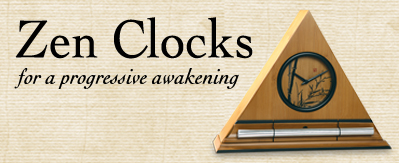 Waking up in the morning should be as pleasant as falling asleep at night. The Zen Alarm Clock's gradual, gentle awakening is transformative. Now & Zen – The Yoga & Meditation Timer Shop
1638 Pearl Street
Boulder, CO 80302
(800) 779-6383
Posted in Bamboo Chime Clocks
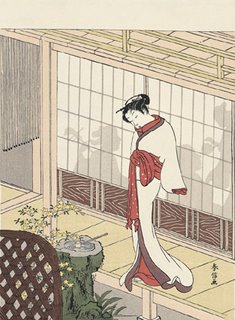 How to Ease Yourself to Sleep: Harunobu Suzuki, Beauty at the Veranda A big part of cognitive-behavioral therapy for insomnia is learning exercises to help your body relax before bed. One way to do this is through progressive tensing and relaxing of your muscles while lying in bed.
Has progressive muscle relaxation worked for you?
“Start at one end and work your way up or down your body,” says Joyce Walsleben, PhD, assistant professor at New York University School of Medicine. “Feel your muscles clench and then release, how they’re lying on the bed, how the covers fall over your body. Make it as elaborate or inconsequential as needed to put you into a cocoon of sleep.”
Another version of muscle relaxation: Imagine a wave of relaxation flowing down your body, from your head to your feet. You can give the wave a color, sound, or temperature.
“You should personalize the experience as much as you want,” says Kathy Doner, MD, who runs a hypnotherapy practice in Sebastian, Fla. “You might start by just noticing your breath with your hand on your tummy. Then with each out breath, focus on a different section of the body and say a word like ‘calm,’ ‘relax,’ or ‘peaceful,’ whatever works for you. You’re redirecting your attention to a part of the body, and when the mind is focused on the body, it’s not thinking ‘I can’t sleep.'”
To try progressive muscle relaxation tonight, follow these step-by-step instructions.
The body responds to stress with muscle tension, which can cause pain or discomfort. Progressive muscle relaxation reduces muscle tension and general mental anxiety. Progressive muscle relaxation often helps people get to sleep.
 Ease Yourself to Sleep Procedure
You can use a prerecorded audiotape to help you go through all the muscle groups, or you can just learn the order of muscle groups and work through them from memory.
- Choose a place where you can lie down on your back and stretch out comfortably, such as a carpeted floor.
- Inhale and tense each muscle group (hard but not to the point of cramping) for 4 to 10 seconds, then exhale and suddenly and completely relax the muscle group (do not relax it gradually). Give yourself 10 to 20 seconds to relax.
- When you are finished, return to alertness by counting backwards from 5 to 1.
Muscle groups and how to tense them
- Hands: Clench them.
- Wrists and forearms: Extend them and bend your hands back at the wrist.
- Biceps and upper arms: Clench your hands into fists, bend your arms at the elbows, and flex your biceps.
- Shoulders: Shrug them.
- Forehead: Wrinkle it into a deep frown.
- Around the eyes and bridge of the nose: Close your eyes as tightly as possible. (Remove contact lenses before beginning the exercise.)
- Cheeks and jaws: Smile as widely as you can.
- Around the mouth: Press your lips together tightly. (Check your facial area for tension.)
- Back of the neck: Press your head back hard.
- Front of the neck: Touch your chin to your chest. (Check your neck and head for tension.)
- Chest: Take a deep breath and hold it, then exhale.
- Back: Arch your back up and away from the floor.
- Stomach: Suck it into a tight knot. (Check your chest and stomach for tension.)
- Hips and buttocks: Press the buttocks together tightly.
- Thighs: Clench them hard.
- Lower legs: Point your toes toward your face, as if trying to bring the toes up to touch your head. Then point your toes away and curl them downward at the same time. (Check the area from your waist down for tension.)
 Ease Yourself to Sleep
Progressive muscle relaxation is sometimes combined with meditation.
adapted from Health.com by Healthwise
Boulder, Colorado—an innovative company has taken one of life’s most unpleasant experiences (being startled awake by your alarm clock early Monday morning), and transformed it into something to actually look forward to. “The Zen Alarm Clock,” uses soothing acoustic chimes that awaken users gently and gradually, making waking up a real pleasure. Rather than an artificial recorded sound played through a speaker, the Zen Clock features an alloy chime bar similar to a wind chime. When the clock’s alarm is triggered, its chime produces a long-resonating, beautiful acoustic tone reminiscent of a temple gong. Then, as the ring tone gradually fades away, the clock remains silent until it automatically strikes again three minutes later. The frequency of the chime strikes gradually increase over ten-minutes, eventually striking every five seconds, so they are guaranteed to wake up even the heaviest sleeper. This gentle, ten-minute “progressive awakening” leaves users feeling less groggy, and even helps with dream recall.
Now & Zen – The Progressive Chime Alarm Clock Shop
1638 Pearl Street
Boulder, CO 80302
(800) 779-6383
 Wake up refreshed, love your alarm clock, transform your mornings with The Zen Alarm Clock's progressive awakening with gentle chimes.
Posted in Bamboo Chime Clocks
 What is a Listening Meditation? Listening Meditation
What is it?
While many meditation techniques require solitude and silence, this one has you engage with sounds all around you; it invites you to work with the noise instead of fighting it. The intent is to experience sound as vibration, rather than information. “The listening practice is a way of interacting with the environment that allows you to take in the whole energy of the present moment,” says Sally Kempton, a spiritual guide who teaches yoga and meditation at her Carmel, Calif.- based Awakened Heart Meditation (sallykempton.com).
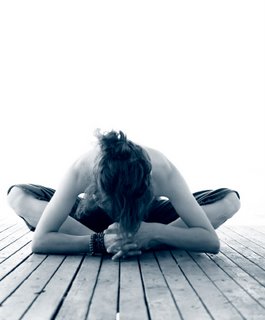 What is a Listening Meditation Good For? What’s it good for?
Especially adaptable and portable, listening meditation can be practiced in crowded, noisy situations—on a bus, at the office—that would hinder other styles. (Kempton once led a listening meditation workshop in the middle of a busy Whole Foods store!) People with particularly chattering minds may need to couple this practice with a mantra or breathing meditation. However, many people welcome the chance to focus outward rather than inward and find that listening meditation is one of the easier techniques to undertake. “You’ll come away from it feeling refreshed, expanded and at ease with your environment,” declares Kempton.
How long does it take?
Try for five minutes at first, then continue adding a minute or two until you can do it for 15 or 20 minutes at a time.
How do I do it?
1. Sit in a comfortable position and close (or half close) your eyes.
2. To get centered and quiet, first go to your breath, noticing but not trying to change it.
3. Now “open” your ears and bring your awareness to the sounds around you. The goal is to listen to the whole range of sounds, without favoring one and without identifying them. Hear the quiet sounds and the silences as well as the dominant sounds.
4. When you find yourself identifying sounds (“there’s a fire engine”; “that’s my neighbor’s TV”), gently redirect your attention from listening to a specific noise back to hearing the whole spectrum of sounds.
5. To end, slowly open your eyes, stand and carry this awareness with you for as long as you can.
adapted from naturalhealthmag.com By Frances Lefkowitz
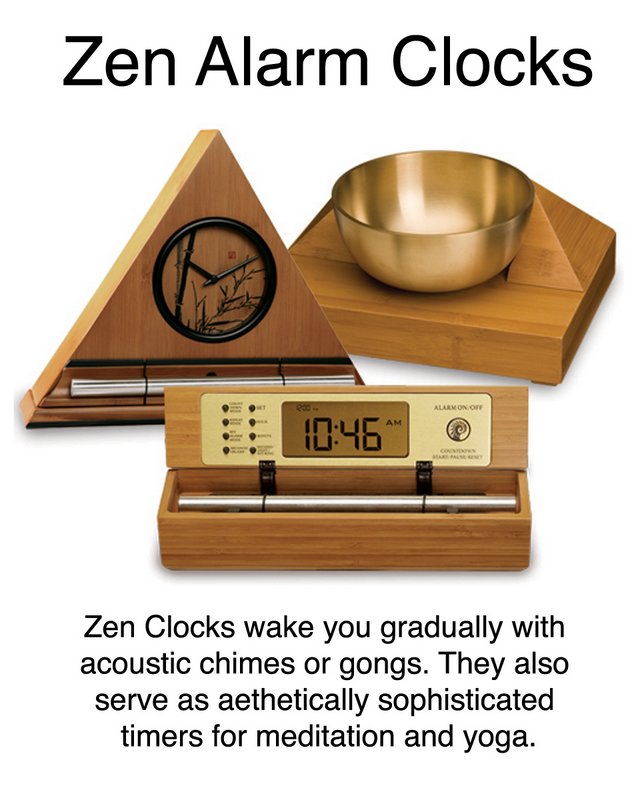 Gong Meditation Timers for a Listening Meditation Now & Zen – The Gong Meditation Timer Shop
1638 Pearl Street
Boulder, CO 80302
(800) 779-6383
Posted in Meditation Timers, Meditation Tools, mindfulness practice
 Exercise to sleep better Exercise. If you have a sedentary job, a lack of physical exertion may be reducing the quality of your sleep. The human body uses sleep to repair and recover. If there isn’t much from which to recover, your body’s sleep cycle could be disrupted. A day of physical exertion (such as taking a run or a swim) or, better yet, regular exercise can make for deeper and more restful sleep. Don’t exercise right before bed to help you get to sleep; it tires out your muscles, boosts your heart rate, and makes you even wider awake.
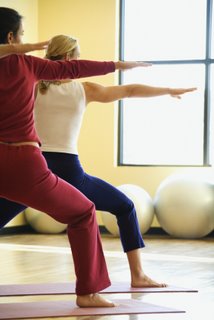 exercise contributes to better sleep Be sure to choose the best ‘Natural Awakening’ Alarm Clock made by Now & Zen, Inc. The Zen Clock features an alloy chime bar similar to a wind chime.
When the clock’s alarm is triggered, its chime produces a long-resonating, beautiful acoustic tone reminiscent of a temple gong. Then, as the ring tone gradually fades away, the clock remains silent until it automatically strikes again three minutes later. The frequency of the chime strikes gradually increase over ten-minutes, eventually striking every five seconds, so they are guaranteed to wake up even the heaviest sleeper. This gentle, ten-minute “progressive awakening” leaves users feeling less groggy, and even helps with dream recall.
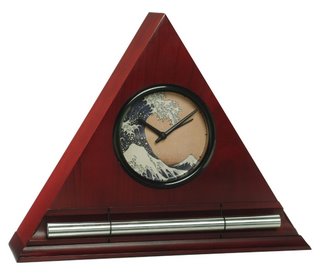 Natural Wake Up Alarm Clock Now & Zen’s Chime Alarm Clock Store
1638 Pearl Street
Boulder, CO 80302
(800) 779-6383
Posted in Uncategorized
 Meditation made easy Basic Breath Meditation
What is it?
The cornerstone of all meditation techniques, this practice centers on something we always do but rarely notice: breathing. “You do not have to do anything with your breath but observe it,” says yoga and meditation teacher Rosen. Eventually, you can work on changing your breath, and sending it into new areas of your torso. But at first, just become aware of each inhalation and exhalation; let your mind track how the breath moves, mapping where it goes to develop an understanding of your own unique “breathing identity.”
What’s it good for?
Use this meditation to get centered anytime and anywhere. “You can retreat into your breath whenever you’re feeling dull, tired or stressed out,” says Rosen.
How long does it take?
Start with 10 minutes at first, then work your way up to 15 and finally 20 minutes.
How do I do it?
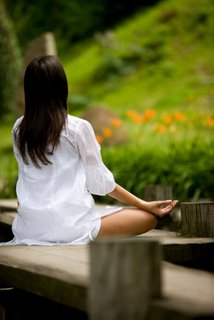 Meditation 1. Sit in a comfortable position with your legs crossed. Or lie on your back with your body straight and a firm pillow or rolled-up towel under your knees. Your arms should rest about 45 degrees from your torso.
2. Breathe quietly in and out through your nose. Feel each breath as it moves through your torso. Feel where in your body the breath is moving and where it is not.
3. Begin to notice how your breath changes as you focus on it, and how your awareness changes in turn. (Rosen likens this process to a feedback loop between the breath and “the witness,” who’s observing it.)
4. When your mind begins to drift, gently bring it back to your breath.
5. Begin to bring your breath into areas of your body that feel dull or “un-breathed.” Imagine your torso as a container, and try actively sending breath into the places it’s not reaching, such as your pelvis or the small of your back. Don’t force the breath, just allow it to follow your consciousness.
6. At the end of your session, wiggle your fingers and toes, then stretch your legs and arms. If you’re lying down, roll over to one side and pause before pushing up to a seated position. Roll up slowly, leading with your torso and raising your head last.
Use our unique “Zen Clock” which functions as a Yoga & Meditation Timer. It features a long-resonating acoustic chime that brings your meditation or yoga session to a gradual close, preserving the environment of stillness while also acting as an effective time signal. Our Yoga Timer & Clock can be programmed to chime at the end of the meditation or yoga session or periodically throughout the session as a kind of sonic yantra. The beauty and functionality of the Zen Clock/Timer makes it a meditation tool that can actually help you “make time” for meditation in your life. Bring yourself back to balance.
adapted from Naturalhealthmag.com By Frances Lefkowitz
Now & Zen – The Gong Meditation Timer Shop
1638 Pearl Street
Boulder, CO 80302
(800) 779-6383
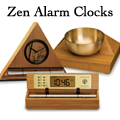 Meditation Timer with Gongs and Chimes 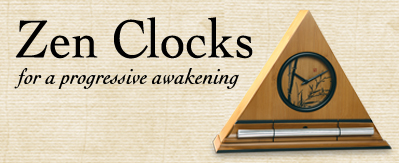 Meditation Timers and Alarm Clocks with Gentle Sounds
Posted in Meditation Timers, Meditation Tools, mindfulness practice
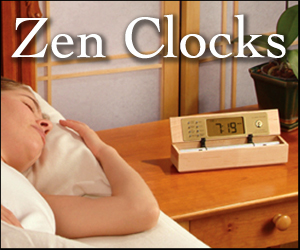 Tips for better sleep If you’ve already managed to figure out at last, how tofall asleep, but you’re having trouble getting goodsleep through the night (i.e. tossing, turning , waking up more than once), this article will tell you what you can do to ensure a peaceful night’s slumber!
Get on schedule. Varying your sleeping times by more than an hour can severely disrupt your sleep quality by “advancing the sleep phase”. For example, let’s say you normally wake up at 6 a.m. on weekdays to get to work, so you get to bed around 10 p.m. because that’s when you start to feel sleepy (and it’s also a good time to ensure 8 hours of sleep). If, on the weekend, you sleep in until 9 a.m., you probably won’t be able to fall asleep that night until 1 a.m. again. In other words, your body thrives on running on a routine; erratic sleeping sessions will interfere with your internal “biological clock”. For some people, and depending on work and routine, a very short rest in the afternoon (the Spanish call it the siesta) could help alleviate drowsiness some people experience during the day.
But make sure not to oversleep. By choosing the most soothing alarm clock to help you wake more naturally. Check out The Zen Alarm Clock with Chime by Now & Zen, Inc. – Boulder, Colorado.
What makes this gentle awakening experience so exquisite is the sound of the natural acoustic chime, which has been tuned to produce the same tones as the tuning forks used by musical therapists. According to the product’s inventor, Steve McIntosh, “once you experience this way of being gradually awakened with beautiful acoustic tones, no other alarm clock will ever do.”
adapted from Wikihow.com
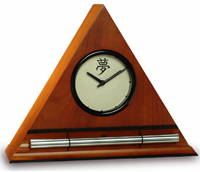 Zen Clocks for a Gradual Awakening with Chimes Now & Zen Headquarter Store
Chime & Gong Alarm Clocks, for a Natural Awakening
1638 Pearl Street
Boulder, CO 80302
(800) 779-6383
Posted in Chime Alarm Clocks, Natural Awakening, wake up alarm clock, Zen Alarm Clock
 Mindfulness Meditation Mindfulness Meditation
What is it?
“Mindfulness meditation is not about achieving bliss or tranquility,” explains Sharon Salzberg, co-founder of the Insight Meditation Society (dharma.org) in Barre, Mass. and author ofLovingkindness: The Revolutionary Art of Happiness (Shambhala). “Rather, its aim is to see things as they really are more clearly.”
What’s it good for?
Mindfulness meditation is a form of “mind training,” says Salzberg. Bringing direct awareness to drinking a cup of tea, for instance, means that you really feel the warmth of the cup in your hands, and really taste the sweetness or the bitterness in your mouth. This applies to our emotional states, too—observe with awareness and perceive more accurately what your experience really is.
How long does it take?
Start with five minutes daily. Gradually add a few minutes to your session each day until you can sit for 20 minutes.
How do I do it?
1. Sit in a comfortable position on a pillow, chair, couch or floor.
2. Listen to the sounds around you while you relax. Practice letting the sounds come and go without holding on to them or pushing them away.
3. As you inhale, think “in”; as you exhale, think “out.” Let this action be a kind of home base.
4. When your mind drifts and thoughts start to wander, pay attention to what comes up. You may be aware of a pain in your shoulder, for instance, or think of an argument from the night before. Acknowledge this thought or feeling, spend a moment with it and then bring your awareness gently back to your home base. Rather than rushing past the new sensations you experience, bring your full awareness to them.
5. If you find yourself getting stuck in an emotion or sensation, it may help to put a mental label on it, to identify it as “anger” or “pain.” Then bring your awareness back to your breath.
6. The traditional way to end this meditation is to acknowledge the positive energy you’ve created and to dedicate it to others. Try saying: “May the merit of this practice be dedicated to all beings everywhere.” Stand, and continue to practice mindfulness as much as you can throughout the day.
 Mindfulness Practice - Meditation Use our unique “Zen Clock” which functions as a Yoga & Mindfulness Timer. It features a long-resonating acoustic chime that brings your meditation or yoga session to a gradual close, preserving the environment of stillness while also acting as an effective time signal. Our Yoga Timer & Clock can be programmed to chime at the end of the meditation or yoga session or periodically throughout the session as a kind of sonic yantra. The beauty and functionality of the Zen Clock/Timer makes it a meditation tool that can actually help you “make time” for meditation in your life. Bring yourself back to balance.
adapted from naturalhealthmag.com By Frances Lefkowitz
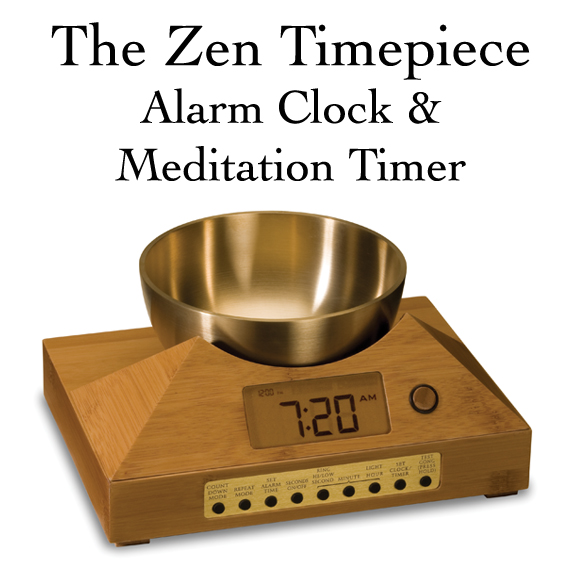 Mindfulness Meditation Timer and Alarm Clock with Gong Now & Zen – The Gong Meditation Timer Shop
1638 Pearl Street
Boulder, CO 80302
(800) 779-6383
Posted in Meditation Timers, Meditation Tools
 White Orchid Zen is not my middle name. I apply obligation and pressure the way other people apply sunscreen—until it seeps through my pores. Then, my stress alarms start swirling like the red light on a police car: You’re late. The fridge is empty. The deadline was yesterday. Even on Sunday, when I lie, sarcophagus-like, under a pile of restful newspapers, at the back of my noggin I see the glow of the red light. My brain just won’t shut off to give me a blinking break from feeling like the cartoon character with her finger in an electrical socket, frazzled up to my fractured eyeballs. For once, I’d like to know just what all the stress is about. Why do our bodies churn like angry turbines? Is stress just some antiquated throwback we don’t need? Is its internal commotion helping or hurting us? Is it something we have no control over— or can we harness it, parceling it out only when we need its motivating force? I’m on a mission to answer these questions.
Stress, THE GOOD GUY
So, what exactly is this monster called stress that keeps me up at night and driven by day? For starters, it’s not a monster—or at least it’s not trying to be. Stress, in the short term, is my defender, says Gabor Maté, M.D., a physician in Vancouver, British Columbia, and author of When the Body Says No: Exploring the Stress-Disease Connection (Wiley). “Acute stress is simply a necessary self-protective mechanism—the body’s fight or- flight response,” he says. “An emotion like fear may trigger the response, but it’s a physiological reaction that you may or may not be aware of.” This fight-or-flight response was at its best for our forebears facing hungry lions. A stress episode then was a short—albeit complicated—burst, revving up every body system to win a battle or get away. My forebear’s brain—in particular the frontal cortex, the brain’s executive center—sent a red alert to the hypothalamus, the hormonal control center, triggering a flood of the stress hormones adrenaline and cortisol. “The cortisol elevates blood sugar levels, mobilizing energy for a quick escape,” says Maté. “The adrenaline provides more energy to fight.” At the same time, this cocktail of stress hormones prompts the heart to quadruple the amount of blood it pumps, from about 5 quarts to 20 quarts a minute, providing more energy. But the blood travels a different route, away from the skin, gut and kidneys to the muscles, so that energy can be used to fight or flee. Blood pressure, heart rate and breathing rates increase, the airways dilate, and the liver starts converting glycogen—the raw material of our body’s fuel—into glucose, or blood sugar, again for power to battle or retreat. In modern times, of course, we’re not confronting hungry animals. But our bodies react exactly the same way, say, if a car swerves into our lane or our child slips off the seesaw. Our entire body mobilizes to turn away from the feckless car or catch the falling child.
 Choose a Mindfulness Meditation However, despite these crucial—sometimes lifesaving—benefits of stress, most of us obsess about it like we do the bad neighbor we can’t get rid of. And so do the media, either telling us constantly how stressed out we are or giving us something else to stress about. “Every ad I see is for some illness or disability in the body and spirits,” says JudithOrloff, M.D., clinical professor of psychiatry at University of California, Los Angeles, and author of Emotional Freedom: Liberate Yourself from Negative Emotions and Transform Your Life (Three Rivers Press). “The media program us to be stressed out and sick.”
“Mindfulness” is the spiritual practice of being aware of your present moment. World famous Zen monk Thich Nhat Hanh has developed the use of a bowl-gong in a practice he calls the “mindfulness bell.” When you hear the sound of the mindfulness bell, you are invited to take a moment to breathe in and out and center yourself in the present. This practice allows the sound of the bowl-gong to periodically connect you to the peace and tranquility that resides inside you right now. This delightful practice reduces stress and improves your overall health.
Mindfulness practice, is increasingly being employed in Western psychology to alleviate a variety of mental and physical conditions.
Scientific research into mindfulness generally falls under the umbrella of positive psychology. Research has been ongoing over the last twenty or thirty years, with a surge of interest over the last decade in particular. In 2011, The Natural Institute for Health’s National Center for Complementary and Alternative Medicine (NCCAM) released the findings of a study wherein magnetic resonance images of the brains of 16 participants 2 weeks before and after mindfulness meditation practitioners, joined the meditation program were taken by researchers from Massachusetts General Hospital, Bender Institute of Neuroimaging in Germany, and the University of Massachusetts Medical School. It concluded that “..these findings may represent an underlying brain mechanism associated with mindfulness-based improvements in mental health. [From Wikipedia]
The Zen Timepiece can serve as a mindfulness bell in two ways: it can be set to strike on the hour (providing an hourly moment of stillness), or it can be set to strike at a programmed interval, such as every 20 minutes, or even every three hours.
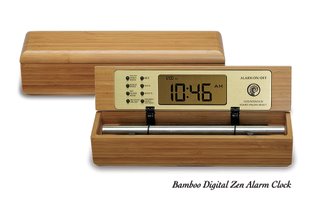 Meditation Timer and Calming Chime Alarm Clock adapted for naturalhealthmag.com by Dorothy Foltz-Gray
Now & Zen – The Chime Meditation and Alarm Clock Shop
1638 Pearl Street
Boulder, CO 80302
(800) 779-6383
Posted in mindfulness practice
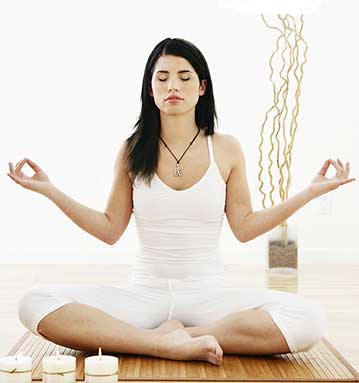 Meditation for Insomnia If you’re tossing and turning and having trouble getting a good night’s sleep, you may want to consider meditation, researchers suggest.
People with primary insomnia reported that they slept better after trying meditation, according to a new study to be presented June 9 at SLEEP, the annual meeting of the Associated Professional Sleep Societies, in Seattle.
Primary insomnia is described as difficulty getting to sleep or staying asleep over a time period of at least one month, according to the U.S. National Institutes of Health.
While most insomnia occurs along with another physical or mental illness or disorder, or as a side effect of medications or other substances, primary insomnia occurs on its own.
In the study, researchers divided 11 participants aged 25 to 45 with chronic primary insomnia into two groups. One group participated in Kriya Yoga — a form of meditation that helps an individual focus internalized attention and can reduce arousal — as well as health education.
The other group received information about improving health through exercise, nutrition, weight loss and stress management but did not participate in meditation.
After two months, the meditation group reported improvements in sleep quality, how long it took to get to sleep, total sleep time, total wake time, sleep efficiency and depression, the researchers reported.
Primary insomnia is believed to be a problem of hyperarousal, with high levels of arousal noted 24 hours a day, said lead study author Dr. Ramadevi Gourineni, director of the insomnia program at Northwestern Memorial Hospital in Evanston, Ill.
“Results of the study show that teaching deep relaxation techniques during the daytime can help improve sleep at night,” Gourineni said in a news release from the American Academy of Sleep Medicine.
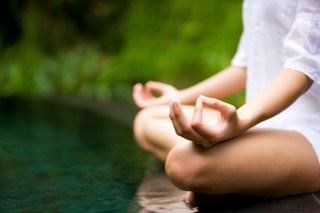 Meditation Pose for Insonmnia About 9.4 percent of U.S. residents, or an estimated 20 million people, try meditating during a 12-month period, according to a 2007 study by the National Center for Complementary and Alternative Medicine. People reported using meditation for various health problems, including anxiety, pain, depression, stress and insomnia.
A 2007 review of the scientific literature found some evidence that meditation is associated with health benefits, possibly by causing heart rate and breathing to slow, improving blood flow and reducing activity in the sympathetic nervous system (the body’s fight-or-flight mechanism).
Our unique “Zen Clock” features a long-resonating acoustic chime that brings the meditation session to a gradual close, preserving the environment of stillness while also acting as an effective time signal. The Digital Zen Clock can be programmed to chime at the end of the meditation session or periodically throughout the session as a kind of sonic yantra. The beauty and functionality of the Zen Clock/Timer makes it a meditation tool that can actually help you “make time” for meditation in your life.
More information
The National Center for Complementary and Alternative Medicine has more on meditation and health.
SOURCE: American Academy of Sleep Medicine, news release, June 9, 2009
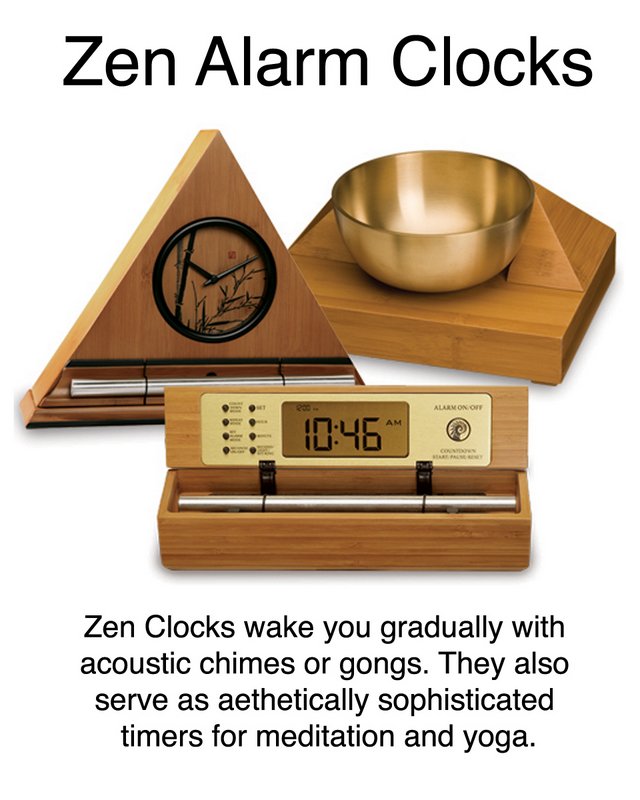 Practitioners usually employ a quiet, tranquil space, a meditation cushion or bench, and some kind of timing device to time the meditation session. Now & Zen – The Chime Meditation and Alarm Clock Shop
1638 Pearl Street
Boulder, CO 80302
(800) 779-6383
Posted in Meditation Timers, Meditation Tools, mindfulness practice
 Breathing Exercise for Relaxation: Ohara Koson (Shoson). 1877-1945 two carp and white lotus 1933 Make the breath-brain connection
Dr. Khalsa recently supervised a small Harvard study using specific breathing techniques to treat insomnia, and all subjects reported an improvement in the quality and quantity of sleep. “There is evidence that long, slow abdominal breathing will reduce anxiety and arousal,” Dr. Khalsa explains. Dr. Naiman recommends one breathing exercise (similar to those Dr. Khalsa used) called the 4-7-8 breath exercise. With your tongue resting on the roof of your mouth, just behind your upper teeth, exhale completely. Close your mouth and inhale through your nose for four counts. Hold your breath for seven counts. Then, exhale while mentally counting to eight. Repeat the cycle three more times. Both are important for restful sleep.
Boulder, Colorado—an innovative company has taken one of life’s most unpleasant experiences (being startled awake by your alarm clock early Monday morning), and transformed it into something to actually look forward to. “The Zen Alarm Clock,” uses soothing acoustic chimes that awaken users gently and gradually, making waking up a real pleasure. Rather than an artificial recorded sound played through a speaker, the Zen Clock features an alloy chime bar similar to a wind chime. When the clock’s alarm is triggered, its chime produces a long-resonating, beautiful acoustic tone reminiscent of a temple gong. Then, as the ring tone gradually fades away, the clock remains silent until it automatically strikes again three minutes later. The frequency of the chime strikes gradually increase over ten-minutes, eventually striking every five seconds, so they are guaranteed to wake up even the heaviest sleeper. This gentle, ten-minute “progressive awakening” leaves users feeling less groggy, and even helps with dream recall.
It’s exquisite sounds summon your consciousness out of your meditative state with a series of subtle gongs. Once you experience the Zen Timepiece’s progressive tones, you’ll never want to meditate any other way. It serves as the perfect meditation timer. Available in 5 wood styles, including bamboo.
adapted from Women’s Health Magazine, by BY LIESA GOINS
 Breathing Exercise 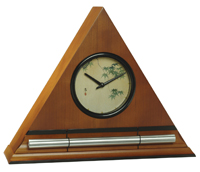 Chime Alarm Clocks and Meditation Timers Now & Zen
1638 Pearl Street
Boulder, CO 80302
(800) 779-6383
Posted in Bamboo Chime Clocks
« Previous Page — « Previous Entries
Next Entries » — Next Page »
|
|
|
|






























